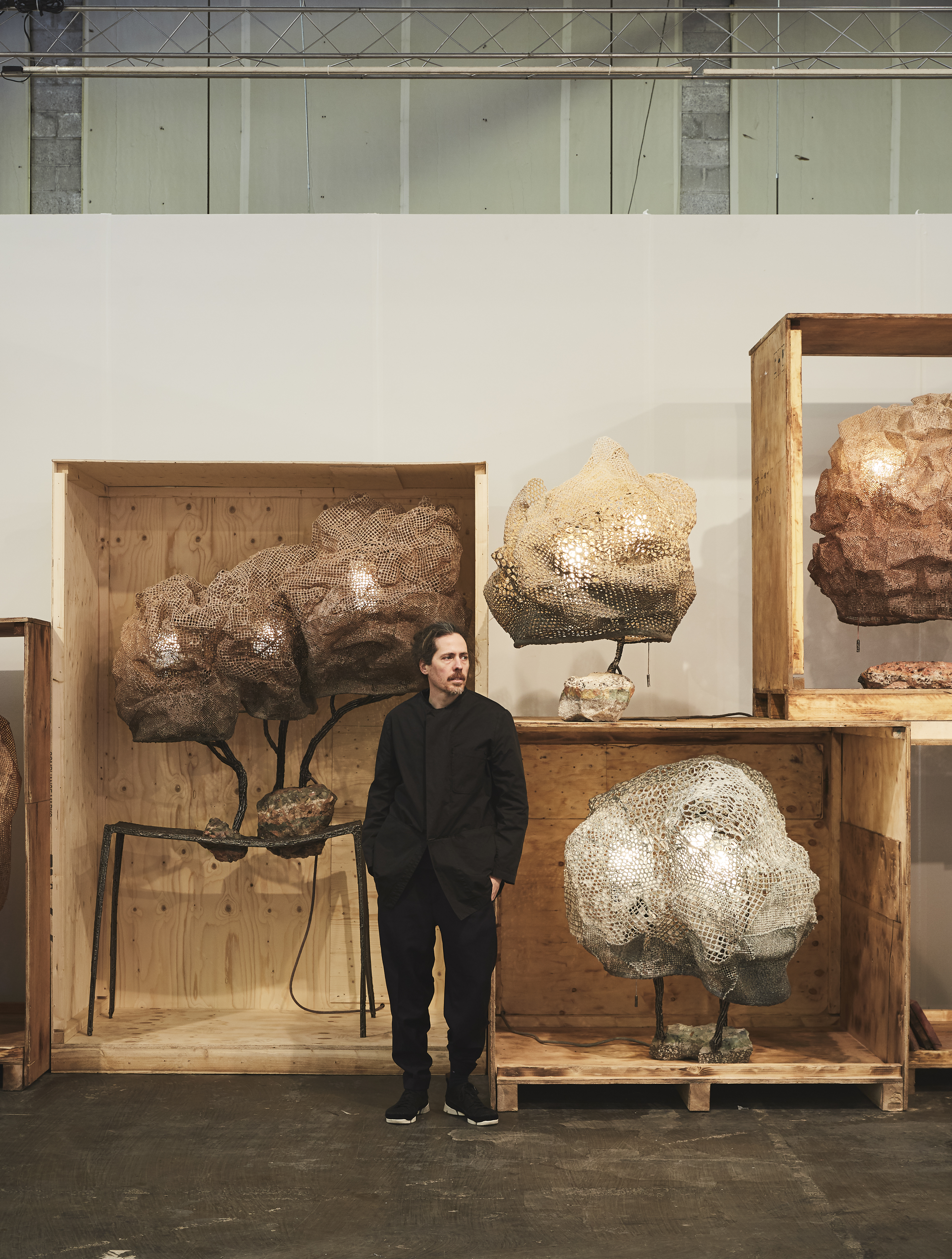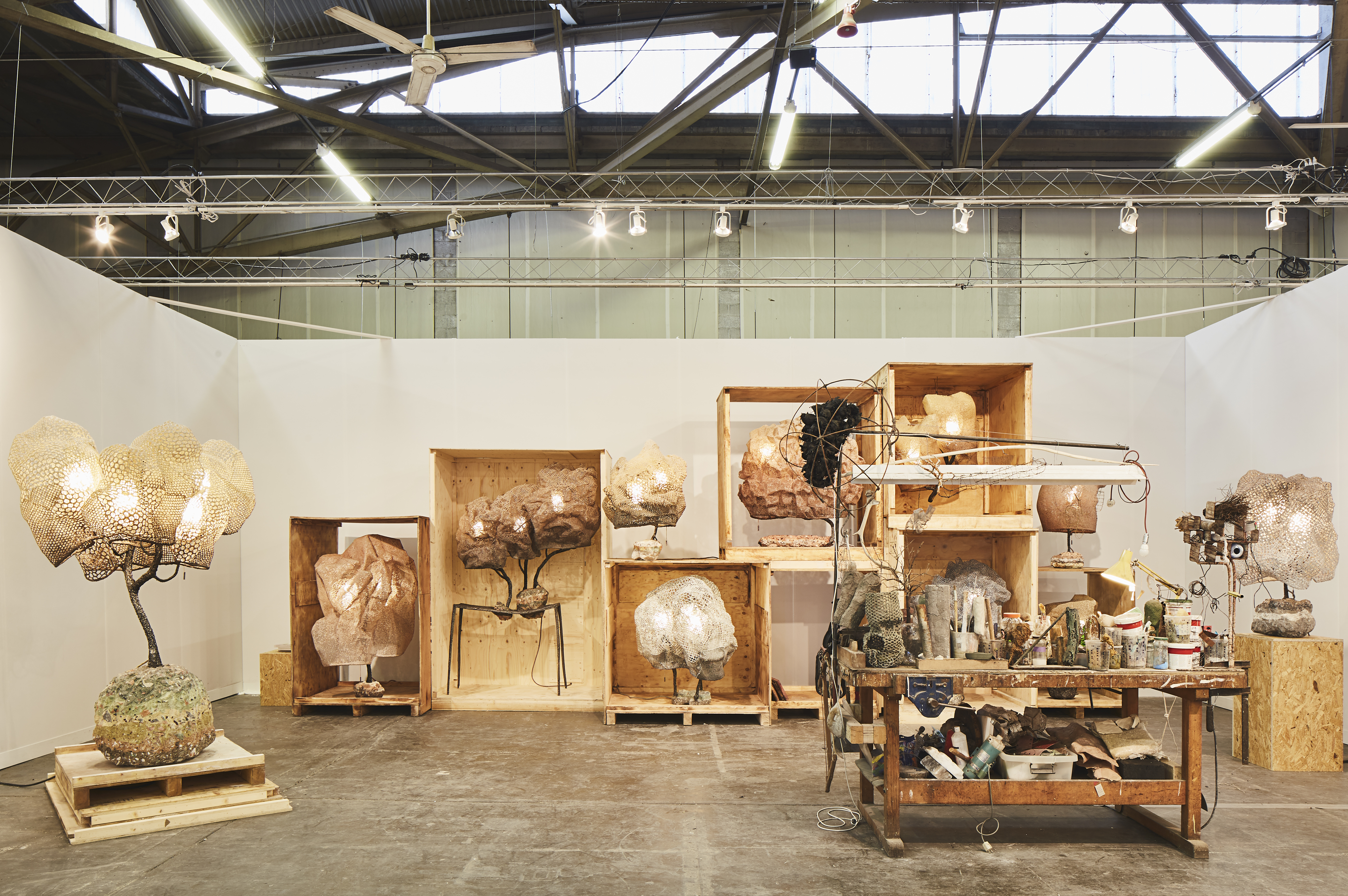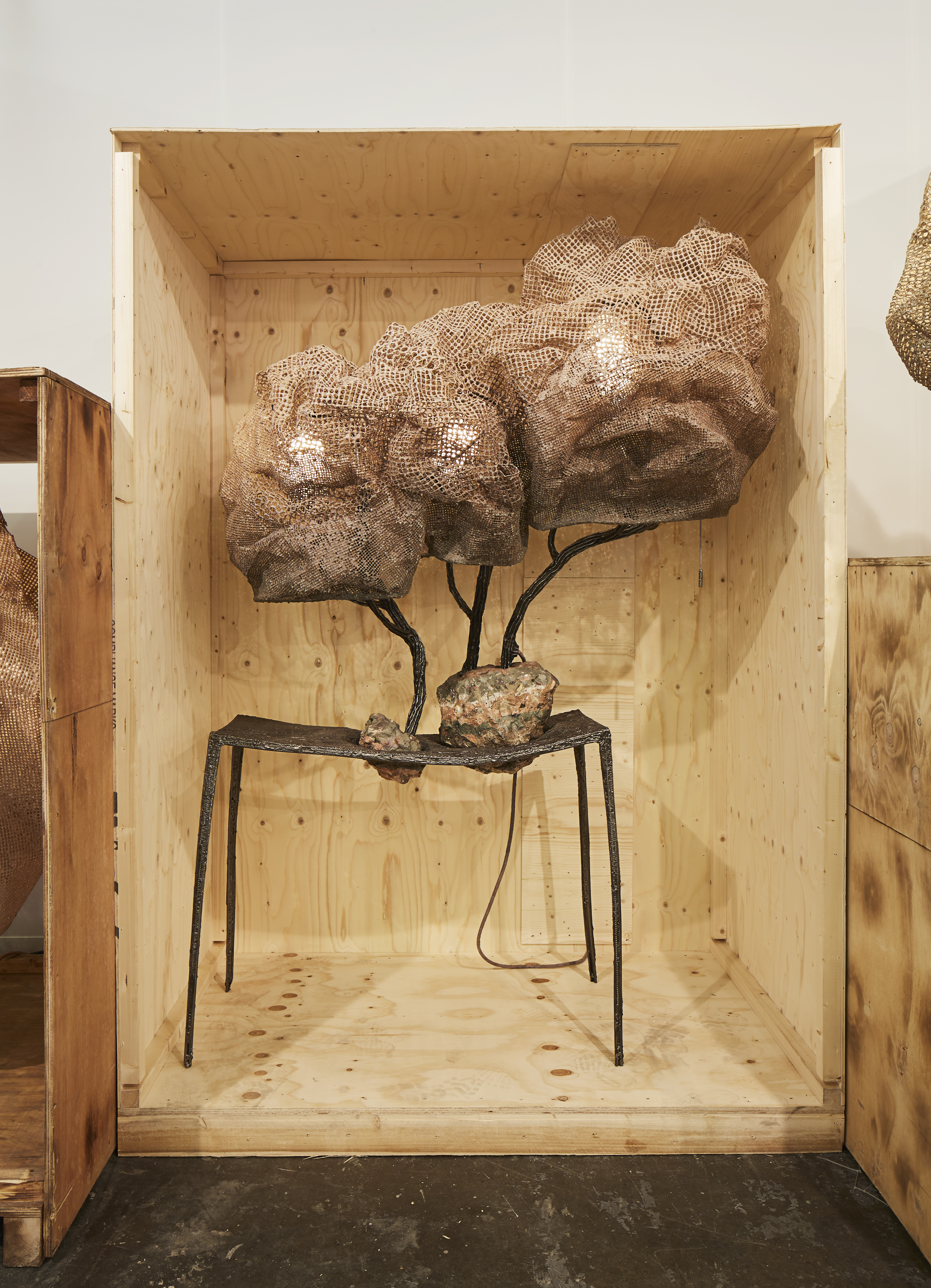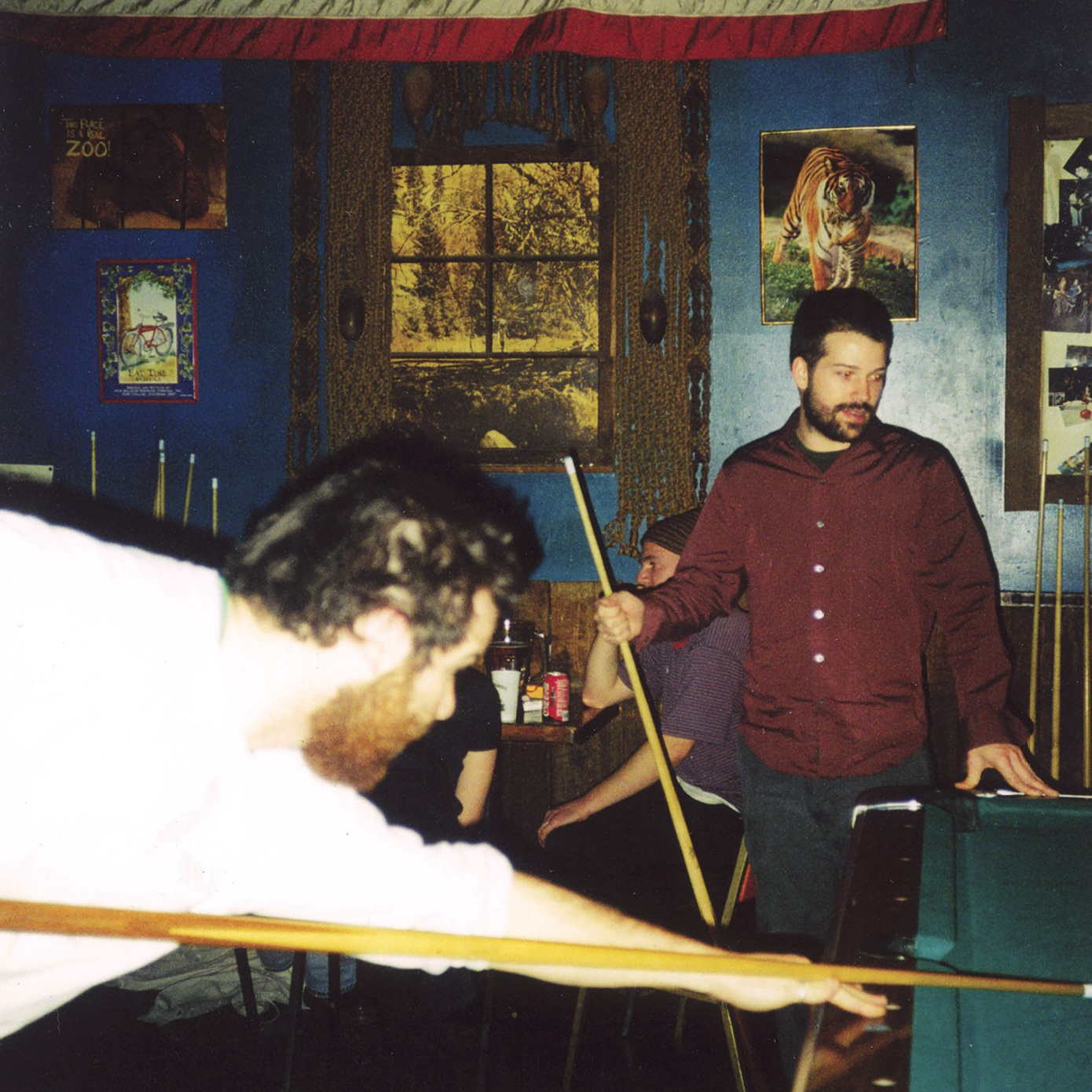
Spanish-born, Netherlands-based artist Nacho Carbonell creates biomorphic structures with industrial materials that dance between the realms of design and sculpture. Carbonell spoke with Cultured about recreating his studio at the Armory Show with Carpenters Workshop Gallery and why he doesn't commit his work to a specific genre.
Your studio was recreated for the Armory Show—what is it like to have a space you know so intimately be inserted into a foreign setting?
The studio is more personal and intimate than the work itself, and we keep showing it to the world in order to be seen, to be exposed and to be judged by others.Does this recontextualize your work and the way it is understood?
This collection talks about the transitional moment when something mutates into something else, a space-time where things are happening. I’m bringing in a specific time of the studio, a moment of transition when the pieces were about to travel to be shown. The work is in constant movement, and we want the studio to represent that.

What was the inspiration for this project?
Aside from this moment of transition, another essential element is memories, which my workshop table symbolizes. It tracks the past, present and future of my studio’s dynamics. It's a personal cabinet of curiosities where I can read the studio’s history, look at the present, and generate new ideas for the future.You work sort of toes the line between art object and design object. Can you talk about the dynamic between the two and where your work lies within that?
I don’t like to focus on the limits of one or the other concept. Creativity is free of borders so the work—I like to think that objects have their own personalities and they want to evolve their own way—build their own consciousness and learn from their environment.What interaction or experience do you seek to provoke between the viewer and your pieces?
I want them to blend in, to fuse, to hybrid. I pretend they bring you through a trip of questioning—bring you to a place to imagine a place to reflect and escape from routine and its stabilities.





